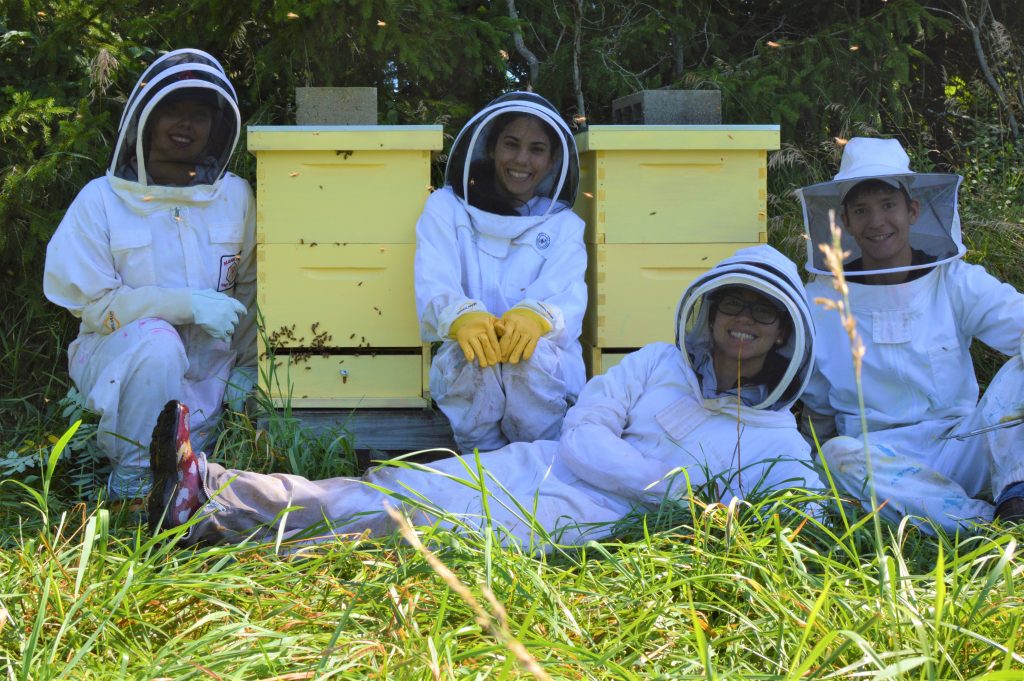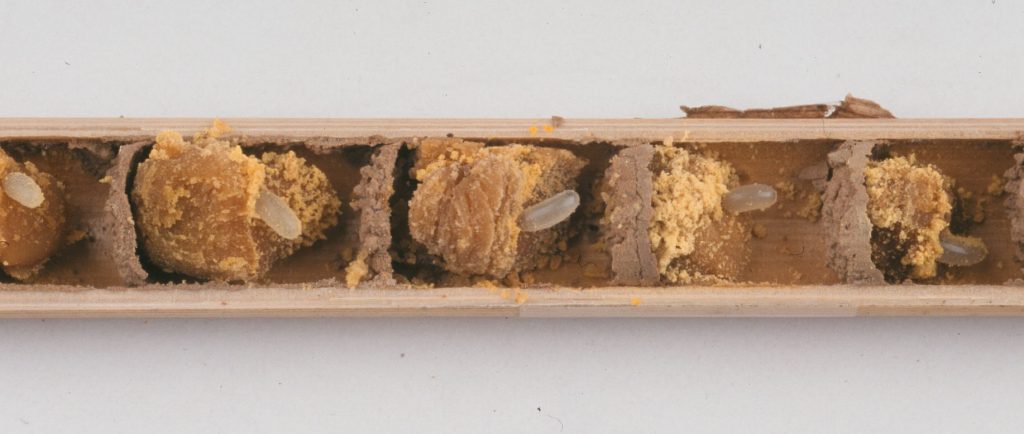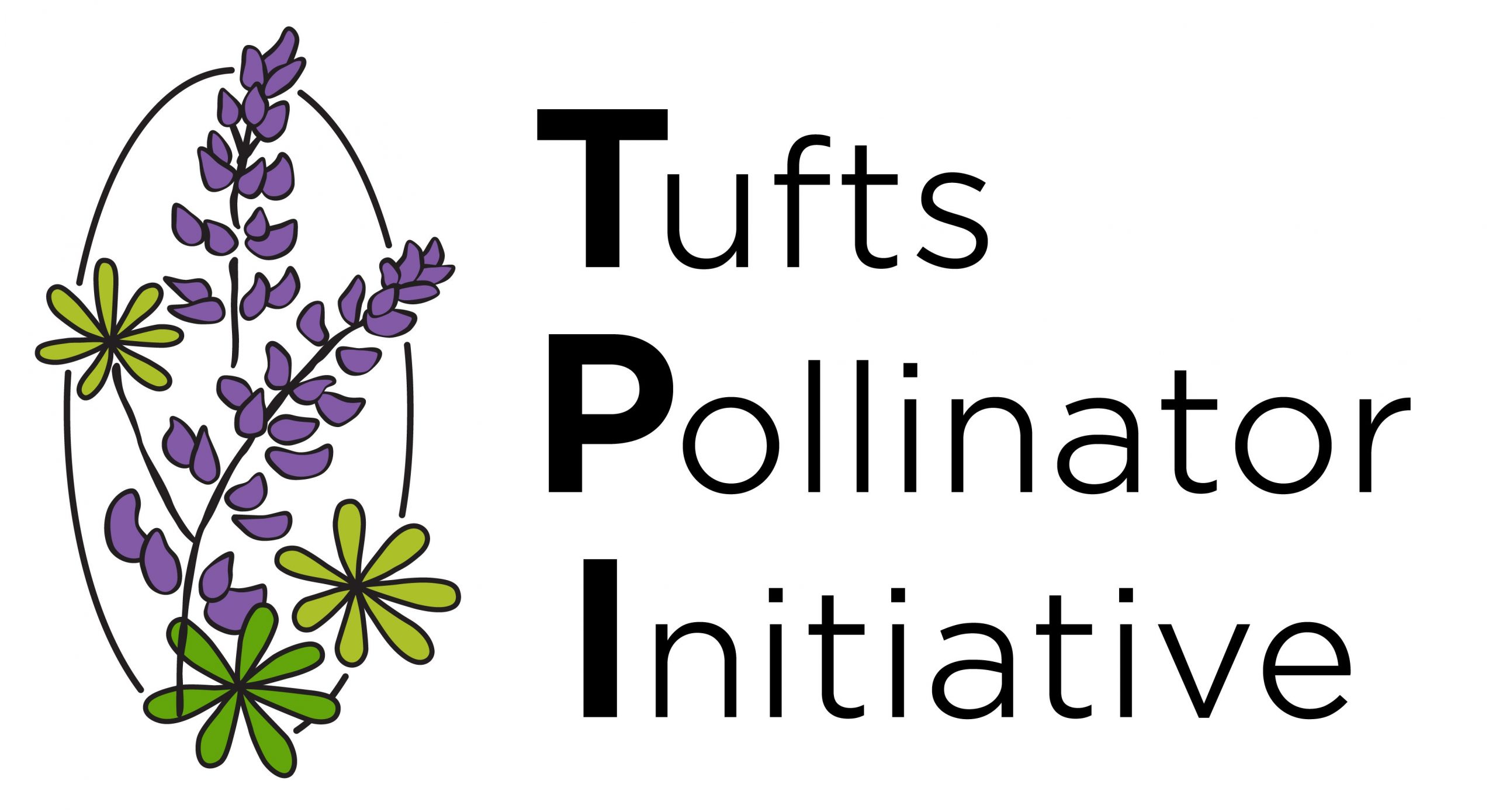Last month I had the opportunity to run a workshop on protecting native bees for 250+ kids at Camp Micah in Bridgton, ME. Like humans, bees need three things: food, shelter, and water. In my workshop, the campers focused on shelter—we built 200 bee “hotels” to donate to the Honeybee Conservancy for their Sponsor-A-Hive program.
We hear a lot about honey bees, which make their homes in hives, but most bees are solitary and make their homes in less conspicuous manner. Mining bees (Andrena species), as their name suggests, make their home by digging tunnels in bare soil. In addition to digging tunnels, cellophane bees (Colletes species) line their nests with a clear protective secretion that resembles…you guessed it..cellophane! To provide shelter for these types of bees, leave your garden un-mulched.


Photo: USGS Bee Inventory and Monitoring Lab
Mason bees and leaf-cutter bees also nest in tunnels, but they do so a bit differently. These bees use ready-made tunnels in wood, hollow sticks, or dried-out plant stems. Female mason and leaf-cutter bees collect pollen and nectar to make a “food ball,” which she shoves to the very bottom of the nest. She then lays an egg on top of this food ball and makes a divider out of either mud (mason bees) or leaves (leaf-cutter bees). The momma bee then collects materials to make another food ball, which she puts in front of her “divider,” lays another egg, and the cycle continues until the nest is full of food and baby bees.

Photo: USDA ARS
The baby bees hatch out of their eggs, eat their nutritious food ball and develop from larvae, to pupae, to adult. In mason bees, pupae spin a cozy cocoon in which they complete their development to adult. The adult mason bees stay inside their cocoon until the weather is just right. In early spring, they chew their way out and emerge into the bright new world. To provide shelter for these bees, leave some of the larger, dried out stems in your garden. Or, like the campers, you can make a bee hotel!
Bee hotels don’t have to be five-star. They can be as simple as taking some dried out stems or reeds, creating a bundle, and securing the bundle with twine. You can hang this bundle somewhere near your garden (where the bees have food!) or in a tree. A variety of tunnel sizes ensures a variety of bees can use your bee hotel—bees come in many shapes and sizes. To provide enough space for the momma bee and her babies, the tunnels should be about 4 – 10 mm in diameter and about 15 cm (6 inches) long. If you don’t have dried-out stems readily available, you can purchase small cardboard tubes or paper straws to make your bundle. Avoid using plastic straws or bamboo as they don’t let the nutritious food ball breathe and may harbor mold.
You can add some amenities to your bee hotel in the form of PVC. A piece of PVC pipe 2 – 4 inches in diameter and a few inches longer than your tubes allows for some protection from the elements. Simply place a cap at one end of the PVC and pack your tubes in until they fit snugly. Again, use twine or if needed, zip ties, to secure your bee hotel. To keep birds and other possible predators out, you can add a security system with 1-inch wire mesh loosely secured to the front of your bee hotel. If possible, face the entrance of your bee hotel to the south so the bees get lots of warm morning sun (and a nice view).
When constructing your bee hotel, think about making it as big as the food (flowers) in your general area will support—you don’t want to raise too many bees and not have enough food. A meadow of wildflowers can support more/larger bee hotels than a small urban garden. To avoid spreading disease, replace the hotel’s linens (the tunnels) every year or two. In March and April, watch the entrance to your bee hotel to see how many bees emerge!

